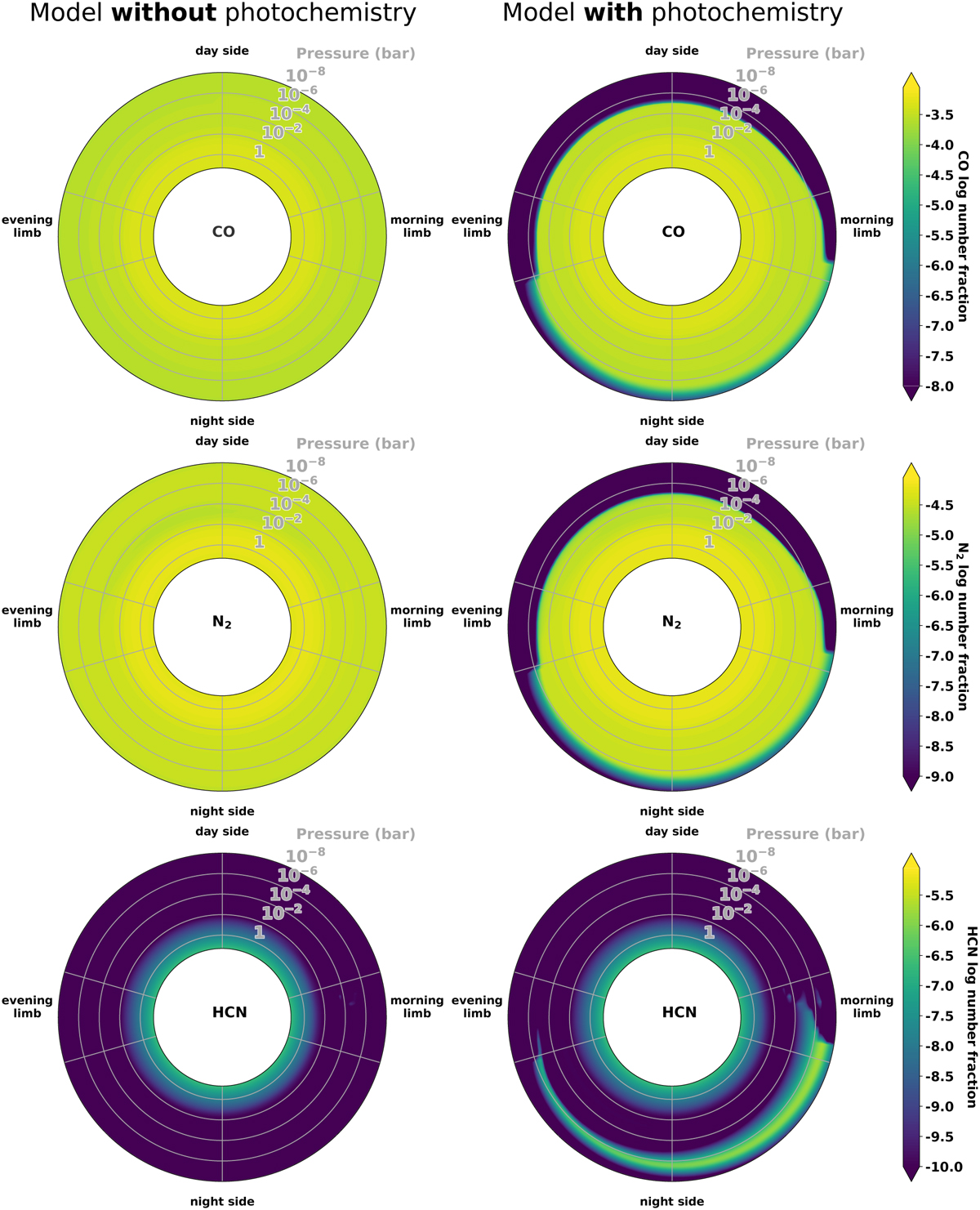Fig. 3

Download original image
Polar plots of CO, N2, and HCN abundances in WASP-76 b. The left-hand column shows a model that does not incorporate photochemistry, the right-hand column shows the full model with photochemistry. Photodissociation forms a strong additional destruction mechanism for day-side species. HCN formation on the planetary night side is only initiated when photochemistry is taken into account. All plots display an equatorial slice of the planet. At the evening and morning limbs, radial lines indicate the opening angle that is probed during transit (32°).
Current usage metrics show cumulative count of Article Views (full-text article views including HTML views, PDF and ePub downloads, according to the available data) and Abstracts Views on Vision4Press platform.
Data correspond to usage on the plateform after 2015. The current usage metrics is available 48-96 hours after online publication and is updated daily on week days.
Initial download of the metrics may take a while.


